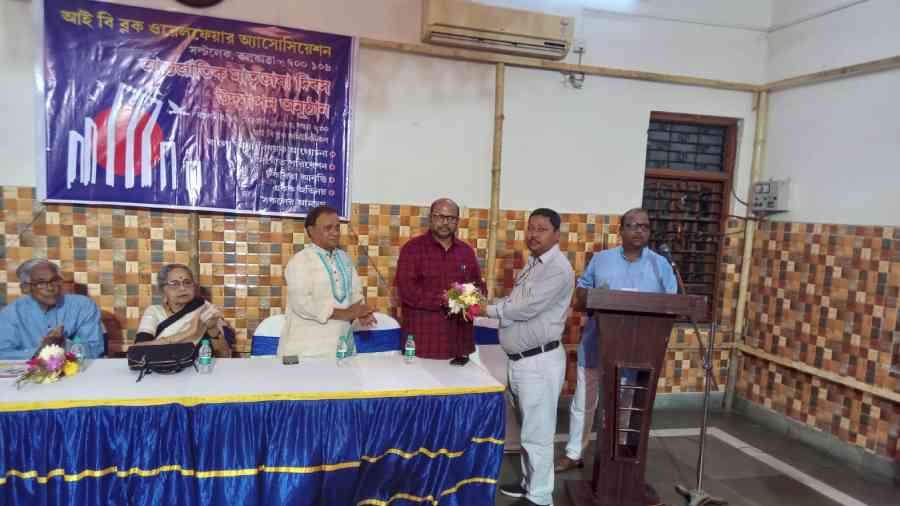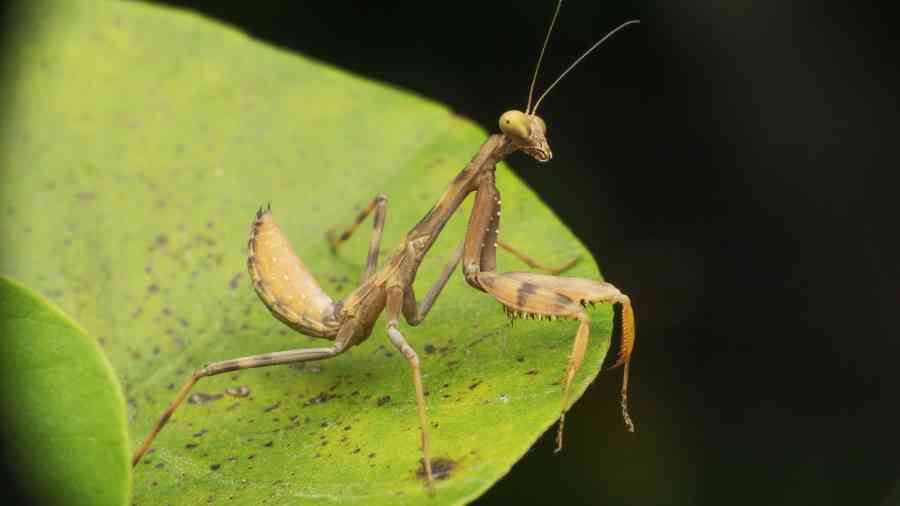An award distribution ceremony at Eco Park gave the audience an opportunity to learn about moths, praying mantis and many other aspects of wildlife and that too, straight from experts.
The ceremony was hosted by Nature Mates, a group that, among others, runs the butterfly zones in Eco Park and Central Park.
World of moths
The Nature Mates Young Biologist award went to Pritha Dey, who amazed the audience with snippets of her research on moths. “There are many who work on butterflies but few work on moths so I chose this field,” said the post-doctoral fellow on the subject. “There are 12,000 species of moths in India but most are nocturnal and hence difficult to study. They are important pollinators, especially of white flowers like jasmines and orchids that bloom at night.”
Moths evolved before butterflies and there are more of them than butterflies too but they are considered pests by some people who try to kill them. “Moths are attracted to celestial lights. These lights orient them in their flight path. For instance, they fly in the direction of moonlight,” said Dey, adding how artificial lights disrupt their system. “If moths see street lights, for instance, they fly towards them but are detected by their predators, bats, and are eaten up.”
Dey has worked in states like Uttarakhand and Karnataka, but never Bengal. “That is why this award is even more encouraging for me,” she smiled.
A lifetime achievement award was conferred upon Bulganin Mitra, a former scientist of Zoological Survey of India, with extensive on-ground experience, be it in the Andamans or the Antarctica. “I now want to research on the pollination habitat of saprophagous organisms in mangroves. These are beings that obtain nourishment from decaying organic matter,” he said.
They also honoured Zakir Mal, nicknamed Kalo, for his contribution as assistant during field research. “Kaloda can replicate the whistles of lots of birds,” said Arjan Basu Roy of Nature Mates, before asking him to demonstrate the calls of bene bou, chokh gyalo, bou kotha kawo, bulbul etc before the audience.
Praying mantis
Two books were released on the day, the first — Praying Mantis-der Katha was by Saurav Dwari and his research supervisor Amal Kumar Mondal. Like the moth, this insect too has not received the popularity researchers claim it deserves. “But then research has to step out of labs and reach people,” said Dwari, speaking of their role in the environment.
To refrain from using chemical pesticides, in Europe farmers use praying mantis in a controlled way to eat pests. “But since they get camouflaged they don't get noticed by laymen, unless they enter a house attracted by light. Even then, very few people can identify a mantis as different from grasshoppers,” said Dwari, who has wanted to give the insect a Bengali name but “people can barely relate to its English name so it’s premature for such a move.”

Different stripes: (L-R) Picture-winged Leaf Moth, Wax Moth, Peck's Skipper Moth
But the insects were popular in Ancient Greek culture and even in modern-day China, where they have songs and poems dedicated to them, the way Indians have on butterflies. “Photographers love them too as they are a challenge to click in their camouflaged surroundings and their structure is interesting to capture, but they have no information on the mantis. Hence this book,” said Dwari.
Nature and culture
The second book was on how nature is seeped into our culture, religion and history. “It covers festivals like Aranya Sashthi and Tushu puja where plants are worshipped, how new leaves and harvests are celebrated, about how the vahanas of our gods are birds and animals, about how Tagore, Nazrul, Jibanananda Das have all written on nature… We wanted to compile all of this in a book,” said Anupam Khan, divisional forest officer of East Midnapore, who has written the book Aranyamangal with his father Bhagyaratan Khan.
The book also explains eco-feminism. “Men going to collect dry leaves in the forest are more prone to vandalising the trees but women do not over-exploit nature,” said Khan, mentioning the role of women in the Chipko Movement and even earlier, when Amrita Devi of Rajasthan sacrificed herself to protect Khejri trees from being felled in 1730.

Bulganin Mitra speaks at the programme at Eco Park in presence of Subhankar Sengupta, Lt Col Shakti Ranjan Banerjee (Retd) and Hidco managing director Debashis Sen
Presenting the awards was Debashis Sen, managing director of Hidco. “The butterfly section in Eco Park had been earmarked right from the time the park opened and Nature Mates has done a commendable job at maintaining it. Young visitors now come to see and learn about nature and may grow up to join such fields of study,” said Sen.
Basu Roy spoke about the Pakhi Bithan section they are maintaining at Eco Park. “Left to itself, a forest survives just fine but the minute a management enters, much has to be monitored. We are grateful for the chance provided by Hidco and their support,” he said.
How can we help maintain equilibrium in the insect world?Write to The Telegraph Salt Lake, 6 Prafulla Sarkar Street, Calcutta 700001 or email to saltlake@abp.in
